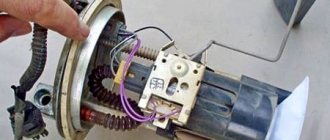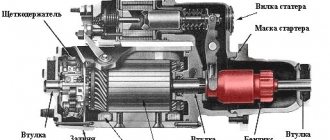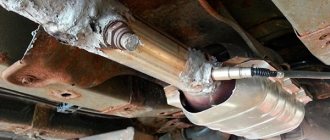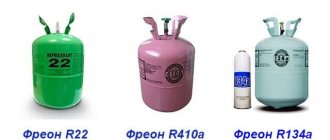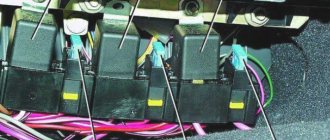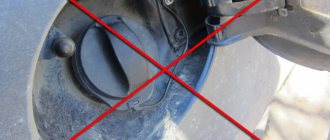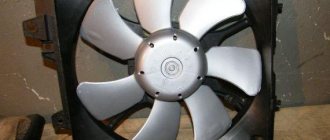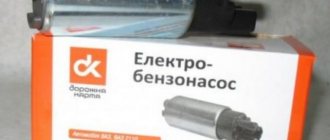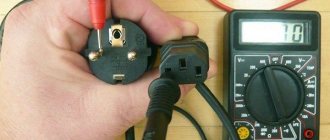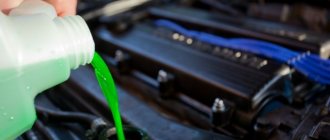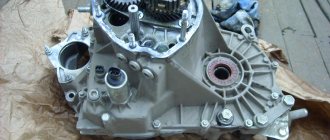The safe operation of the vehicle depends on the performance of many car parts, but some elements require special attention and care. For example, depressurization of the engine fuel system often causes gasoline to ignite, as a result of which the car can be completely engulfed in flames within a few minutes. A malfunction of the fuel pump can also lead to very unpleasant consequences, but if you know about the main signs of failure of the most critical parts, you can promptly detect a technical flaw and make the repair yourself.
Symptoms of malfunction
If the fuel pump is completely faulty, the car will not be able to start. When such a breakdown occurs while driving, the engine will stall and the car will stop. If a technical problem is just beginning to appear, then at this stage you can judge the malfunction of this particular part by the following symptoms:
- The engine begins to operate intermittently (this symptom is especially pronounced at high crankshaft speeds).
- Jerking when trying to quickly gain speed.
- Unstable engine operation at idle speed.
- Unstable operation when driving on a long climb.
If the fuel pump is faulty, there may be some extraneous noise. If you use carburetor car models in which the fuel pump is installed on the engine, then a decrease in engine oil pressure is possible due to fuel getting into it due to a rupture of the supercharger membrane.
Reasons for failure of the fuel pressure sensor
There are actually few reasons for the failure of the fuel pressure sensor. This is either damage to the internal parts of the sensor or its wiring. In the first case, this may be mechanical damage to the body, its rusting due to mechanical damage or simple old age. It may also damage any electrical contact inside the sensor. As a rule, it cannot be repaired and must be replaced.
However, more often than not, it is not the sensor itself that is damaged, but its signal wiring or connection connector (the so-called “chip”). In some cases, it is noted that under the influence of vibration, wires fray, their insulation deteriorates, and a short circuit may even occur, which can cause the engine to stall while driving. In this case, it is necessary to perform additional diagnostics and replace the wiring and/or connector that fits onto the sensor.
As for the mechanical fuel pressure control valve, it can simply allow a certain amount of fuel to pass through, which is why there will be low pressure in the system with all the ensuing consequences, in particular, a drop in engine power, “twitching” of the car and other troubles.
The cause of the breakdown may also be a clogged mesh on the regulator. Clogging can be caused by debris getting into the fuel if the fuel filter does not cope with the tasks assigned to it or it is simply clogged and debris from it passes into the fuel line. As for diesel engines, in cold weather the diesel fuel can freeze, and solid paraffin particles form in it. In this case, it makes sense to use diesel fuel defrosters.
Another reason is wear or jamming of the locking element inside the pressure regulator housing. Another cause of the malfunction is a loose fit of the regulator cone inside the rack. The cause of the malfunction may also be the electronic control system (coil, microcircuit with strain gauges).
Fuel pump device
Cars with different types of engines are equipped with fuel pumps of different technical design. If a carburetor engine is used, a mechanical part is used, which consists of a housing, a membrane, valves and a pusher.
Most of the electric pumps used in modern cars are located in the fuel tank. The injector also uses a fuel injection pump to increase fuel pressure just before it is delivered to the cylinders.
The principle of operation of the fuel pump
If a mechanical pump is used, the movement of gasoline through a thin pipeline is carried out due to the formation of vacuum inside the chamber when the membrane moves under the action of a spring when the pusher is pulled back.
After fuel is drawn into the pump, the intake valve closes and the outlet valve opens, through which the fuel enters the carburetor. The pusher of a mechanical fuel pump is mechanically connected to the engine camshaft and makes a reciprocating movement for one full revolution of the shaft.
An electric pump uses an electric motor that is installed directly into the fuel tank. Gasoline is pumped by a special roller, which is connected to the motor armature, but there are also gear and centrifugal models of devices.
Preventing fuel pump breakdowns
Both mechanical and electric models of gasoline pumps are reliable parts that rarely fail, but in order to extend the life of the products, you should learn some preventative methods. Measures aimed at preventing breakdowns and increasing the service life of the fuel pump include:
- Replacing fuel filters.
- Removing impurities (water, sand, etc.) from the gas tank.
- Replace the gas tank if there is corrosion.
Filters must be replaced on time. Installing new parts will avoid blockages and operation of the fuel pump under increased loads. For the same reason, water and other impurities should be removed from it. Replacing the gas tank may be necessary if it is damaged, when at the site of the dent, pockets of corrosion form on the inside of the part (relevant only for metal containers).
Diagnostic instructions
The first step is to free access to the ramp and fitting installed at the end of the manifold. Remove elements that interfere with measurements - air duct, filter housing, crankcase ventilation pipe, etc. (the list of parts depends on the car model). Proceed to measuring, following the instructions:
- Unscrew the protective plastic cap from the diagnostic fitting on the ramp.
- Place a cut-off plastic container and use a cap to unscrew the spool valves to release the pressure previously pumped up by the pump. You can press the valve or turn the spool 2-3 turns.
- Place one end of the gasoline hose onto the pressure gauge fitting and secure with a clamp. Unscrew the spool from the manifold, pull the second end of the hose onto the pipe.
- Turn on the ignition, and the electric fuel pump will pump fuel into the system. Make sure there are no leaks at the joints of the diagnostic tool.
- Start the engine and record the fuel pressure in the rail using the pressure gauge.
Gasoline supply problems - common symptoms of a fuel pump malfunction
Common symptoms of a faulty fuel pump include:
- The engine starts with difficulty.
- Unstable operation of the motor under increased loads.
- The car jerks when trying to accelerate.
These symptoms can also be observed in the presence of malfunctions of other fuel cells and parts of the ignition system. In order to accurately establish the cause of the non-standard operation of the power unit, it is necessary to perform some actions to accurately establish the “involvement” of the pump in the presence of non-standard manifestations.
How to check the fuel pump on a GAZelle
In order not to once again perform actions that pose a potential threat to the technical condition of the car, parts of the fuel system of a GAZelle car should be checked only when there are obvious signs of a malfunction, which can suggest the presence of a breakdown of this type. Symptoms of a faulty fuel pump may include the following:
- The engine often stalls or cannot be started.
- There are jerks when the car moves.
- Unstable engine operation at idle speed.
- The presence of extraneous sounds when the car is moving.
“Floating” engine speeds are possible not only at idle, but when the accelerator pedal is held in any position.
If there is at least one sign of a fuel pump malfunction, then diagnostics should be carried out. First of all, you should check the presence of pressure in the fuel rail. For this purpose, you can use any suitable device that allows you to set the value of this indicator to a value of at least 0.3 MPa.
The pressure gauge is connected to the fuel cell, then the ignition is turned on. If the fuel pump is working properly, the pressure in the fuel system should not be less than 3 atmospheres. If this indicator is lower, then it is necessary to examine the fuel line for leaks, and also carefully check the coarse and fine fuel filters. It is also recommended to check the wiring and fuse in the pump network. If it turns out that all these systems are in perfect order, then there is a high probability of failure of the main part.
How to check the fuel pump of a VAZ 2114
Fundamentally, the operation of the electric fuel pump on the VAZ 2114 does not differ from the operation of a similar device of other brands of cars. For normal operation of the part, it is also necessary to ensure that the part is connected correctly and that there are no mechanical barriers to the fuel path. You can check the serviceability of the fuel pump as follows:
- Determine the serviceability of the fuse in the electrical circuit of the fuel pump.
- Establish the serviceability of the electromagnetic relay of the fuel pump.
- Check the fuel pressure with a pressure gauge.
It is also recommended to check the electrical power supply to the fuel pump motor. For this purpose, you can use a multimeter, with which you should alternately measure the electrical voltage on 2 contact wires and check the integrity of the “negative” contact.
Signs of a VAZ 2110 fuel pump malfunction
If the fuel pump of a VAZ 2110 car does not turn on, then such a breakdown may manifest itself as follows:
- The motor does not start.
- The vehicle moves jerkily.
- Unstable engine operation in idle mode.
If the pressure in the vehicle's fuel system is insufficient, the cause may be excessive wear on the internal parts of the fuel pump. For this reason, the presence of noise during operation of the device can also be a reliable diagnostic sign of its malfunction.
When should measurements be taken?
The operation of the power system is structured as follows:
- An electric fuel pump located in the tank pumps fuel along the line into the fuel rail and further to the injectors.
- The regulator limits the gasoline pressure at a certain level, releasing excess into the tank through the return pipeline.
- The injector mixes fuel with air, then the mixture is directed to the nozzles, which open at the command of the controller.
When the wear of the regulator (abbreviated as RTD), pump or injectors reaches a critical level, the pressure in the gasoline circuit will change towards a decrease or increase. There are 2 possible scenarios: there is not enough fuel mixture for normal engine operation, or there is an excess of it - the spark plugs are literally flooded with fuel.
In both cases, checking the pressure in the fuel rail located next to the cylinder head will help identify the problem. The element is a manifold with branches for injectors, to which the main gasoline line is connected.
The fuel pressure in the manifold should be measured if the following symptoms occur:
- the car accelerates poorly, after sharply pressing the accelerator pedal, jerking and deceleration are felt;
- the engine of a loaded car “does not pull” and starts poorly when cold;
- shots are periodically heard in the exhaust manifold;
- a warm engine does not start after a short period of parking (especially in summer); the starter needs to be turned for 20–40 seconds.
The first two signs indicate a clear lack of gasoline, resulting from a drop in pressure in the ramp. The third case is unburnt fuel entering the exhaust manifold with subsequent combustion (a popping sound is heard). The fourth symptom indicates leaking injectors when the cylinders are filled with pure gasoline during parking. Until the pistons release excess fuel, the engine will not start.
We recommend: How to remove the instrument panel on a VAZ-2114 in 12 steps? Features and detailed instructions
How to check the fuel system using an injector
Supplying gasoline under significant pressure is a necessary condition for the proper functioning of an injection engine. For this reason, even when the device is working, but not sufficiently productive, the car engine may not start or may operate intermittently. Checking the fuel pump can be divided into several stages. It is recommended to start diagnostics with the most probable and less time-consuming studies.
How to check the fuel pump fuse
If the fuel pump malfunction is caused by a blown fuse, then such a breakdown is easy to detect and repair. To diagnose, you need to find the relay and fuse box on the car and, guided by the electrical diagram and pictograms on the housing cover, find the element responsible for the safety of the fuel pump circuit. You can check the serviceability of the fuse using a multimeter. To do this, you need to switch the device to resistance measurement or diode diagnostic mode and connect the probes to the contacts of the part. If the fuse is working, a small resistance value will be displayed on the device display. If there are no indicators, the part must be replaced.
The fuel pump fuse may blow due to a short circuit in the electrical circuit, as well as when the device operates under increased loads. To eliminate the possibility of repeated failure of the electrical element responsible for the safety of the wiring, it is necessary to carefully check the wires for the presence of areas where the positive contact may come into contact with ground. If the fuel pump operates in a non-standard mode, which increases the load on the electrical circuit, the part will need to be urgently replaced to eliminate the possibility of a fuse blowing and a car fire.
The fuel pump stopped pumping due to a faulty relay
An electromagnetic relay is used to reduce the load on the switching elements of an electrical system. This part is an electrical “button” that may not work if the winding in the coil burns out or the internal contacts break.
To check the fuel pump relay, you will need to find the installation location of this part, then carefully remove it from the mounting socket. The integrity of the internal coil can be determined by a characteristic click when connecting an electric current of 12 V to the working contacts of the element. For diagnostics, you can use a multimeter. The serviceability of the relay is determined by the presence of resistance in the coil circuit.
Burning of the internal contacts can also cause the relay to malfunction, so if clicks are heard, but there is no current conduction through the second pair of terminals of the device, the product should also be replaced.
The fuel pump does not pump when the ignition is turned on - check the power supply
Electric current is supplied to the contacts of the electric fuel pump immediately after the ignition is turned on. If the gasoline pump does not start, the reason may be a broken wiring. To make sure that the electrical circuit is intact, it is necessary to measure the voltage directly at the electrical current input into the device. For this purpose, you can use a multimeter or a pointer voltmeter.
Using an electrical measuring device, measure the voltage at the contacts of the fuel pump. As a rule, three contacts are connected to this element, two of which are positive, and the third is negative (ground). In order to carry out measuring work, touch the “+” contact with the red probe of the device, and touch the “-” contact with the dark probe. The positive conductors must have the same voltage as at the battery terminals, and the negative must be properly connected to the metal body of the car.
Signs of a broken fuel pump motor
To pump fuel, an electric motor is installed in the gasoline pump. The internal winding of this part may burn out, which will cause the fuel supercharger to become completely inoperable.
If the electric motor is not completely out of order, then this device may operate unstably. Partial failure of a part can be determined by uneven sound during operation of the device. Frequent acceleration of the electric motor or deceleration of rotor rotation may indicate interturn short circuits.
Fuel pump pressure has dropped due to a clogged coarse filter
The fine filter is installed directly in front of the fuel rail, but in front of the fuel pump there is also a coarse gasoline filtering element. This part is used to protect the internal parts of the fuel pump from debris. Being an effective barrier to relatively large pieces of debris, the filter becomes clogged during operation. Complete blocking of the gasoline supply can occur even during short-term use of the vehicle when contaminated fuel is poured into the tank.
If the performance of the fuel pump decreases, you should first check the fuel coarse filter. To remove this part from the gas tank, you will need to unscrew and remove the fuel pump. The filter is cleaned with compressed air followed by rinsing in acetone.
How to check the operation of the fuel pump check valve
To prevent low fuel pressure when the engine is not running, as well as to protect fuel hoses from mechanical damage and increase engine stability, a check valve or pressure regulator is installed in the gasoline supply system. This element can also fail, so if there are problems with the supply of gasoline to the injectors, you need to check the functionality of the part.
In order to identify a malfunction of the check valve, you can use a pressure gauge, which is included in the fuel system. A properly functioning element will dump fuel back into the gas tank at a pressure of more than 3 atmospheres. After the fuel pump stops working, a working check valve should maintain residual pressure in the vehicle's fuel system.
If the check valve is constantly open, then the fuel pump does not pump gasoline due to the presence of a complete reverse flow of fuel. When the valve is blocked in the closed position, a dangerous increase in fuel pressure occurs, which can cause rupture of hoses and over-richness of the fuel mixture.
How to check fuel pump pressure
In order to check the pressure of the fuel pump at home, a pressure gauge is used. This device can be installed on the fuel system of a car, after which its value is recorded in various engine operating modes.
What pressure should the fuel pump produce?
When conducting tests, it is important not only to establish the presence of pressure in the pipelines of the vehicle’s power system, but to determine whether the value of this indicator is standard. For most car models, a fuel system pressure of 3 atmospheres is typical if the bypass valve is installed under the hood of the car. If this part is located directly in the fuel pump housing, then the pressure can reach 4 - 5 atmospheres.
How to check a fuel pump with a pressure gauge
You can use a pressure gauge to check the fuel pump pressure. The measuring device is connected to a special fitting on the fuel rail. If such an element is missing, then a suitable tee should be installed in the fuel supply system and a device for determining pressure should be connected to it.
If it is necessary to carry out diagnostics on a device removed from the fuel tank, then it will need to be placed in some container filled with gasoline. Then a pressure gauge should be connected to the output fitting of the part, and voltage should be applied to the electrical contacts.
When performing work with flammable liquids, safety rules must be followed. Do not smoke or test the device near open flames or sparking tools. It is also necessary to take care in advance about the health of the electrical circuit.
Operating principle of RTD
Kamaz pump
The valve design and operating principle depend on the type of fuel system of a particular vehicle. There are 3 ways to supply gasoline from the tank to the injectors:
- The pump together with the regulator is installed inside the tank; fuel is supplied to the engine through one line.
- Gasoline is supplied through one tube and returned through another. The fuel system check valve is located on the distribution rail.
- The circuit without a mechanical regulator provides for electronic control of the fuel pump directly. The system contains a special sensor that registers pressure; the pump performance is regulated by the controller.
In the first case, the return flow is very short, since the valve and electric pump are interlocked into a single unit. The RTD, located immediately after the supercharger, dumps excess gasoline into the tank, and the required pressure is maintained throughout the supply line.
The second option is used in most foreign cars. A valve built into the fuel rail allows excess fuel to flow into the return line leading to the tank. That is, 2 gasoline pipes are laid to the power unit.
There is no point in considering the third circuit - instead of a regulator, there is a sensor whose functionality is checked using a computer connected to the diagnostic connector.
A simple fuel pressure valve installed in the fuel pump unit consists of the following elements:
- cylindrical body with pipes for connecting the supply and return lines;
- a membrane connected to a locking rod;
- valve seat;
- spring.
The amount of pressure in the supply line depends on the elasticity of the spring. While most of the fuel goes into the cylinders (high load on the engine), it keeps the membrane and valve stem closed. When the crankshaft speed and gasoline consumption decrease, the pressure in the network increases, the spring compresses and the membrane opens the valve. The fuel begins to be discharged into the return line, and from there into the gas tank.
The fuel pressure regulator installed in the rail operates on a similar principle, but reacts faster to changes in load and gasoline consumption. This is facilitated by connecting an additional pipe of the element to the intake manifold. The higher the crankshaft speed and the vacuum on the spring side, the stronger the membrane presses the rod and closes the passage of fuel into the return line. When the load decreases and the speed drops, the vacuum decreases and the rod releases - the return flow opens and excess gasoline begins to be discharged into the tank.
Diagnostics of the fuel pump of a carburetor car
You can check the performance of the fuel pump of a carburetor car without using any instruments. Diagnostics are performed in the following sequence:
- The fuel hoses are disconnected from the fuel pump.
- The fastening bolts are unscrewed.
- The fuel pump is removed from the cylinder head.
- Use the thumb of your right hand to close the inlet fitting of the fuel pump.
- Using the thumb of your left hand, apply several pressures on the pump pusher.
- The appearance of a vacuum at the incoming fitting will indicate the serviceability of the membrane and inlet valve.
In a similar way, you can check the serviceability of the outlet valve by holding the outlet fitting with your finger and making several intense movements with the pump pusher. If the device is working properly, positive pressure will form at its outlet.
Symptoms of a faulty fuel pump on carburetor engines are almost the same as when using an electric device. The difference can only be observed in the absence of characteristic noise from the operation of a twelve-volt motor.
How to change the fuel pump on a Lada Granta photo and video
The fuel pump for the Lada Granta is not a consumable item and usually does not bother car owners. Replacement is simple, but the price tag for the fuel pump is steep, but more on that below.
Replacing the fuel pump on video.
Replacing the fuel pump in detail with a description of each step
The algorithm of actions is as follows:
- Remove the negative terminal from the battery. A mandatory requirement if you carry out any work that affects the electrical system of your car.
- The fuel pump is located under the rear seat. The rear seats need to be raised, I remove them altogether. It comes off easily. You need to “pull the string” in the center of the seat and remove it.
Pull the loop and pull it up
We lift the rug and clean out the dirt in the seat. It must be clean, as this dirt can get into the fuel tank. The contour of the slot is indicated in the figure. Disconnect the fuel pump chip to relieve pressure in the fuel system. Next, under the hood, unscrew the cap from the fuel rail, and use a screwdriver to press the breather (nipple) - this releases the pressure.
Relieving pressure from the fuel rail using a screwdriver
Put the cap back on. Below I will describe an alternative option for relieving pressure in the fuel frame. Unscrew the 4 bolts securing the fuel pump.
4 bolts securing the plastic fuel pump cover
Remove the fuel hoses from the fuel pump.
Removing hoses from the fuel pump
Next, using a hammer and a drift (chisel or straight screwdriver), we “scroll” the pump counterclockwise. Next, remove the lock washer by simply pulling it up. And take out the fuel pump.
What pressure should a mechanical fuel pump produce?
The capacity of the mechanical part is about 80 liters per hour, so if the gas pump pumps fuel, there is no need to check the pressure level. The carburetor power system of the car will work correctly even if the fuel is supplied by gravity. Taking into account the undemanding pressure in such a device, the development engineers set the gasoline injection limit to 0.3 atmospheres.
If the fuel pump does not pump, then this part must be urgently repaired or replaced. Operating a car with a faulty gasoline pump can be dangerous: the car can catch fire or stall at the most inopportune moment. Even if no tragic accidents occur, constant jerking of the car while driving will cause accelerated wear of engine and transmission parts.
Car won't start after DIY replacement
This is a fairly common problem. It must be said that the car should not start immediately after replacing the pump. The pump first needs to create operating pressure in the system. To do this, you need to turn on the ignition for a short time (a few seconds). The key must be inserted into the lock, but not turned. The lights on the dashboard should light up. Then you can rotate the engine with the starter for five to ten seconds. If nothing works out, then you should take a break for half a minute and repeat your actions.
What devices are used
Converted tire pressure gauge
Several instruments can serve as devices for taking pressure readings.
- A special device purchased from an auto parts store. It comes complete with an adapter, drain hose and pressure gauge. Costs about 1.5 thousand rubles.
- Converted tire pressure gauge. The instrument scale and tube are subject to modification. As you know, the air pressure gauge shows a value of up to 20 atm, and the fuel measurement limit is around 5-7 atm. For this reason, reading errors may occur, and the device is modified to take this into account. Regarding the tube: you need to change it to a gas-resistant version.
Characteristics of the Bosch fuel pump 0580453453
Especially for my readers, I got confused and measured the fuel pump that is on my display case. In fact, the characteristics of Bosch gasoline pumps differ in the length and very rarely in the diameter of the body. Why? The diameter of the body can be adjusted using a gasket made of petrol-resistant rubber.
Most often, the characteristics of fuel pumps (not only Bosch, but also from other manufacturers) may differ in length, pressure, location of terminal chips and that’s it :). The fuel pump mesh does not differ in seating, but it may differ in shape. The chip for the terminal can be remade or supplied from the same VAZ. The length of the fuel pump is important, since its operation depends on this when the fuel level in the tank is low, and if it is in the module, then you need a match to install it.
Fuel pump length:
- Bosch fuel pump 0580453453 - 105 mm
- Bosch fuel pump 0580453449 - 65 mm
- Bosch fuel pump 0580453465 - 90 mm
[custom_ads_shortcode2]
